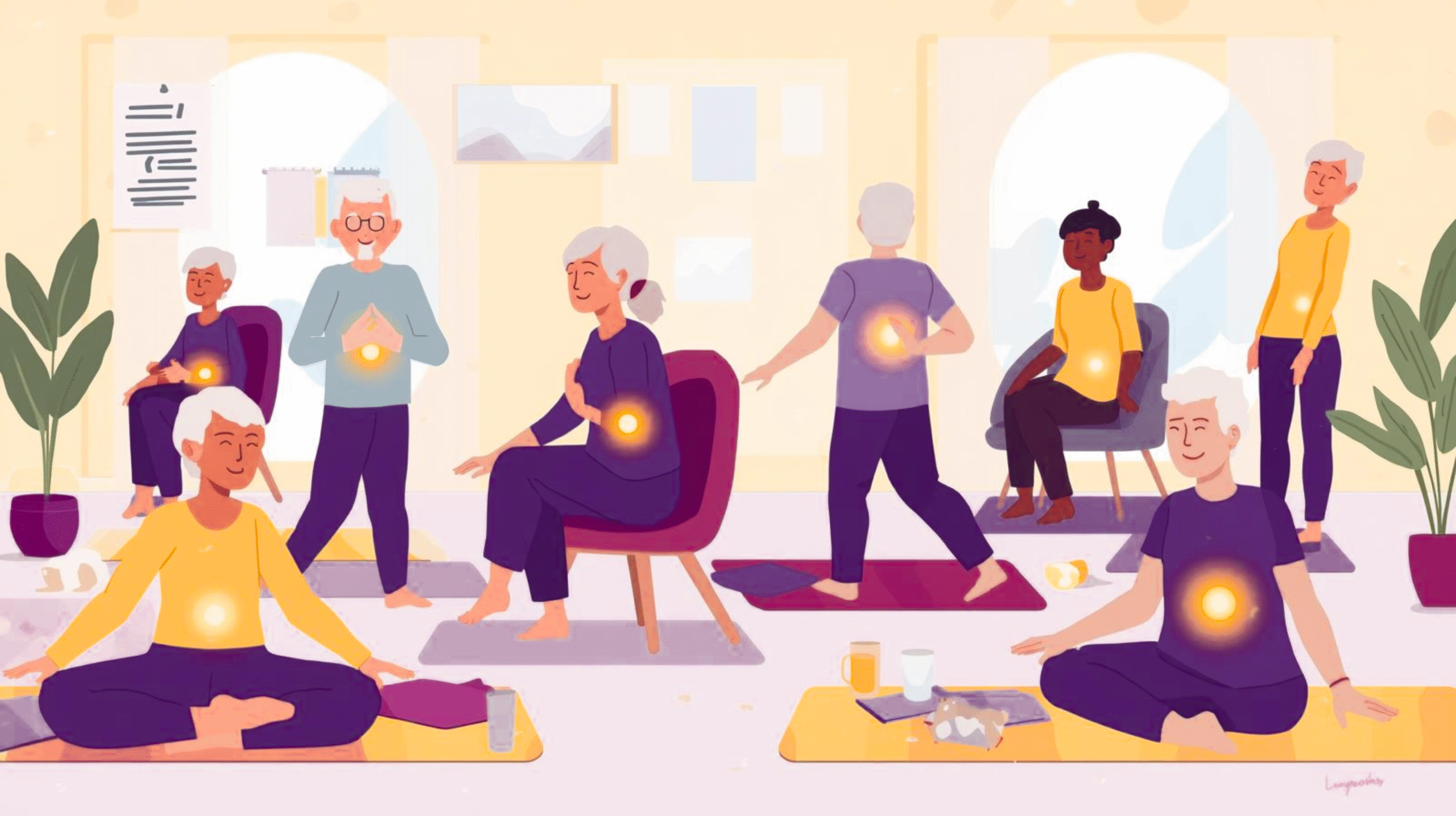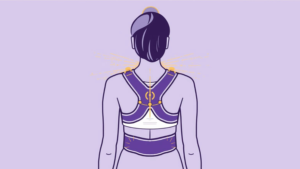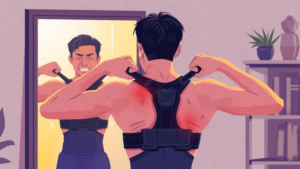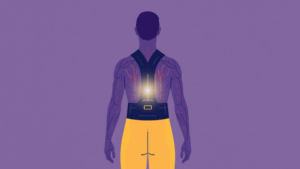As we age, our bodies naturally undergo changes that can make everyday movements more difficult. Stiff joints, weaker muscles, and a slower recovery process can all contribute to discomfort, particularly in the back. Among seniors, back pain is one of the most common health concerns, often linked to conditions such as osteoarthritis, spinal degeneration, or simply the result of decades of wear and tear. According to the World Health Organization, musculoskeletal conditions are among the leading causes of disability in older adults, with chronic back pain being a major contributor [1].
The good news is that back pain does not have to mean the end of an active, independent lifestyle. While medication and medical interventions can sometimes be necessary, many seniors find that gentle, low-impact exercises and movements provide significant relief. These activities not only target pain reduction but also improve flexibility, strength, and overall well-being. In fact, experts emphasize that staying active is one of the most effective strategies for managing chronic back pain in older adults [2].
Pain relief activities designed specifically for seniors focus on safety, simplicity, and consistency. They are not high-intensity workouts; instead, they are carefully chosen movements that reduce stiffness, improve circulation, and strengthen supportive muscles. For example, gentle stretching helps loosen tight areas, while strengthening exercises for the core and hips take pressure off the lower back. Even something as simple as walking or practicing balance exercises can dramatically improve the quality of life.
It’s important to note that every individual is different. Seniors should always consult with a healthcare provider before starting new routines, particularly if they have chronic conditions like osteoporosis, heart disease, or severe arthritis. However, with the right guidance and gradual progression, these activities can become a powerful tool in regaining mobility, reducing reliance on pain medications, and maintaining independence.
This article explores the best pain relief activities for seniors, highlighting stretches, strengthening routines, balance practices, and lifestyle modifications. We’ll also discuss safety tips, address common questions, and provide evidence-based guidance for integrating these movements into daily life.
Why Seniors Experience More Back Pain?
Back pain in older adults can be attributed to a variety of age-related changes and lifestyle factors. Some of the most common causes include:
- Spinal degeneration – The natural wear and tear of spinal discs and joints can lead to stiffness and discomfort.
- Osteoporosis – A reduction in bone density makes the spine more fragile and prone to fractures.
- Weakened muscles – Aging often leads to loss of muscle mass, particularly in the core, hips, and lower back.
- Poor posture – Years of slouching, lifting incorrectly, or sitting for long periods contribute to imbalances.
- Reduced flexibility – Tight hamstrings, hips, and back muscles can restrict movement and increase pain.
Understanding these causes helps in tailoring activities that not only relieve pain but also address underlying weaknesses.
Benefits of Back Pain Exercises for Seniors
Engaging in gentle, structured routines provides multiple benefits:
- Reduced Pain and Stiffness: Light stretches and mobility exercises ease tension in tight muscles.
- Improved Posture: Strengthening the core supports spinal alignment.
- Enhanced Mobility: Regular movement prevents stiffness and increases range of motion.
- Better Balance: Activities like tai chi reduce fall risks by improving stability.
- Boosted Confidence: Being able to move with less discomfort encourages independence.
- Improved Circulation: Back pain exercise helps blood flow, supporting healing and joint health.
Types of Pain Relief Activities for Seniors

1. Gentle Stretches for Flexibility
Stretching loosens tight muscles and keeps the spine mobile. These can be done seated or standing, making them accessible for all fitness levels.
Examples:
- Seated Forward Bend – Sit on a chair, extend legs slightly forward, and lean gently to stretch the lower back.
- Cat-Cow Stretch – Performed on hands and knees, arch and round the back slowly to relieve stiffness.
- Hamstring Stretch – Place one leg on a low stool and bend forward slightly to stretch the back of the leg, easing lower back pressure.
2. Strengthening Exercises for Core and Hips
A strong core helps stabilize the spine, reducing pressure on the lower back.
Examples:
- Pelvic Tilts – Lie on your back with knees bent, gently press your lower back into the floor.
- Bridging – From the same position, lift hips slowly to strengthen glutes and lower back.
- Seated Knee Lifts – While sitting, lift one knee at a time to engage abdominal muscles.
3. Low-Impact Aerobic Activities
Cardiovascular movement increases circulation, reduces stiffness, and helps maintain healthy weight.
Examples:
- Walking – Daily walks improve circulation and flexibility.
- Swimming or Water Aerobics – Buoyancy reduces strain while providing full-body exercise.
- Cycling on a Stationary Bike – Gentle on joints and effective for building endurance.
4. Balance and Stability Movements
Falls are a significant risk for seniors. Exercises that improve balance also support pain-free movement.
Examples:
- Heel-to-Toe Walk – Walk in a straight line, placing heel to toe.
- Standing Leg Raises – Hold a chair for support and lift one leg sideways.
- Tai Chi – Known for improving balance, posture, and stress management.
5. Yoga and Gentle Movements
Yoga combines stretching, strengthening, and breathing, ideal for seniors dealing with back pain.
Poses to Try:
- Child’s Pose – A gentle stretch for the spine.
- Supine Spinal Twist – Loosens tension in the lower back.
- Seated Side Stretch – Opens up tight oblique and spinal muscles.
Safety Tips for Seniors Practicing Pain Relief Activities
- Always warm up before exercising.
- Start with short sessions (5–10 minutes) and progress gradually.
- Use supportive surfaces like yoga mats or soft flooring.
- Avoid movements that cause sharp pain.
- Stay hydrated.
- Consult a physiotherapist for personalized routines [3].
Lifestyle Modifications Alongside Exercise
In addition to back pain exercises, small lifestyle changes can make a big difference:
- Ergonomic chairs – Reduce slouching while sitting.
- Proper footwear – Supportive shoes ease spinal pressure.
- Sleep hygiene – A good mattress helps keep the spine aligned.
- Regular breaks – Avoid sitting too long; move every 30 minutes.
Conclusion
Back pain in seniors is common, but it does not have to control daily life. With consistent, safe, and gentle activities, seniors can regain mobility, reduce discomfort, and improve their overall quality of life. The key is starting small, being consistent, and listening to the body’s signals. Over time, these movements not only provide pain relief but also strengthen the body, improve confidence, and enhance independence.
Rather than seeing back pain as an inevitable part of aging, seniors can take active steps to manage and even prevent discomfort. Combining stretching, strengthening, balance exercises, and mindful practices like yoga offers a holistic approach to spinal health. Supported by lifestyle changes and professional guidance, these pain relief activities become more than just exercise, they become a pathway to a healthier, happier, and more independent life in the golden years.
Looking for more tips? Don’t miss these related guides.
- https://betterhood.in/learn/can-a-compression-belt-really-fix-your-back/
- https://betterhood.in/learn/how-heat-therapy-belts-work-to-soothe-pain/
Frequently Asked Questions:
1. How often should seniors do back pain exercises?
A: Most experts recommend 3–5 times per week for the best results, but daily gentle stretches are safe and beneficial.
2. Can seniors with arthritis do these activities?
A: Yes, but they should prioritize low-impact exercises like swimming, tai chi, or walking, and avoid high-intensity moves.
3. What if I feel pain while exercising?
A: Mild stretching discomfort is normal, but sharp or worsening pain is a warning to stop and consult a doctor.
4. Do I need equipment for these activities?
A: Most exercises can be done at home with just a chair, mat, or resistance band. Swimming requires pool access.
5. How long before results are noticeable?
A: Many seniors report reduced stiffness and pain after 2–4 weeks of consistent practice.
References:
- World Health Organization. (2019). Musculoskeletal health. Retrieved September 22, 2025, from https://www.who.int/news-room/fact-sheets/detail/musculoskeletal-conditions
- National Institute on Aging. (2021). Exercising with chronic pain: What older adults should know. U.S. Department of Health and Human Services. Retrieved September 22, 2025, from https://www.nia.nih.gov/health/exercising-chronic-pain
- Mayo Clinic. (2021). Back pain: Self-care. Retrieved September 22, 2025, from https://www.mayoclinic.org/diseases-conditions/back-pain/diagnosis-treatment/drc-20369906























